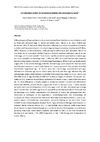Identificador persistente para citar o vincular este elemento:
https://accedacris.ulpgc.es/jspui/handle/10553/17556
| Campo DC | Valor | idioma |
|---|---|---|
| dc.contributor.author | Abella Pérez, Elena | en_US |
| dc.contributor.author | Marco, Adolfo | en_US |
| dc.contributor.author | Diéguez-Uribeondo, Javier | en_US |
| dc.contributor.author | López-Jurado, Luis Felipe | en_US |
| dc.date.accessioned | 2016-06-22T02:30:45Z | |
| dc.date.accessioned | 2018-06-15T09:25:38Z | - |
| dc.date.available | 2016-06-22T02:30:45Z | |
| dc.date.available | 2018-06-15T09:25:38Z | - |
| dc.date.issued | 2010 | en_US |
| dc.identifier.uri | https://accedacris.ulpgc.es/handle/10553/17556 | - |
| dc.description.abstract | Different types of fungi and bacteria have been isolated from hatched and non-hatched as well as failed and non-failed eggs in natural sea turtles nests (Marco et al. 2006, Phillott and Parmenter, 2001, Phillott et al. 2001). Microbiota infections are common in artificial incubation activities and they seem to have an important negative impact on embryo development (Phillott, 2002). However, no clear evidences of their pathogenic effects have been described. The aim of this study was to investigate whether fungi and bacteria represent pathogenic agents to sea turtle eggs, and to assess whether there exists a specific period during incubation in which eggs are more susceptible to microorganisms. In 2006 and 2007, we carried out two experiments in Boavista (Cabo Verde) consisting in infecting loggerhead eggs at different embryo development stages with: 1) live non-hatched egg shells that showed fungal spots (caused by Fusarium solaniand Fusarium oxysporum), and 2) with hyphae of F. oxysporum and F. solani isolated from live non-hatched loggerhead egg. Our results show that control eggs (non-infected) and eggs infected with Fusarium spp. hyphae had a minor mortality rate than eggs infected only with infected eggs shells or both treatments together (Fisher exact two-tailed, p< 0.001). We did not find differences in egg mortality at different incubation stages of infection (Chi-square two-tailed, p> 0.5). Newborns from different treatments of infection time or type of infection agent did not show differences in length, weight, or incubation duration and turn over effort proof (Univariate ANOVAs, p>0.05). Results suggest that Fusarium oxysporum and F. solani, despite being the most common fungi found in sea turtle eggs, is not the main microbiotic agent of egg death. It seems that sea turtle eggs have no susceptible period during incubation to be infected by microorganisms. Further investigations are necessary to isolate the microorganisms that functioned as pathogens in the experiments. | en_US |
| dc.format | application/pdf | es |
| dc.language | eng | en_US |
| dc.source | 28th ISTS Symposium on Sea Turtle Biology and Conservation, Loreto, BCS, México, 2008, p. 1 | en_US |
| dc.subject | 24 Ciencias de la vida | en_US |
| dc.subject | 2401 Biología animal (zoología) | en_US |
| dc.subject | 240116 Herpetología | en_US |
| dc.subject | 240111 Patología animal | en_US |
| dc.title | Pathogenic effect of microorganisms on loggerhead eggs | en_US |
| dc.type | info:eu-repo/semantics/conferenceObject | en_US |
| dc.type | ConferenceObject | es |
| dc.investigacion | Ciencias | en_US |
| dc.rights.accessrights | info:eu-repo/semantics/openAccess | es |
| dc.type2 | Actas de congresos | en_US |
| dc.identifier.ulpgc | Sí | es |
| item.fulltext | Con texto completo | - |
| item.grantfulltext | open | - |
| crisitem.author.orcid | 0000-0001-6380-6130 | - |
| crisitem.author.fullName | López Jurado, Luis Felipe | - |
| Colección: | Actas de congresos | |
Visitas
53
actualizado el 27-ene-2024
Descargas
43
actualizado el 27-ene-2024
Google ScholarTM
Verifica
Comparte
Exporta metadatos
Los elementos en ULPGC accedaCRIS están protegidos por derechos de autor con todos los derechos reservados, a menos que se indique lo contrario.
